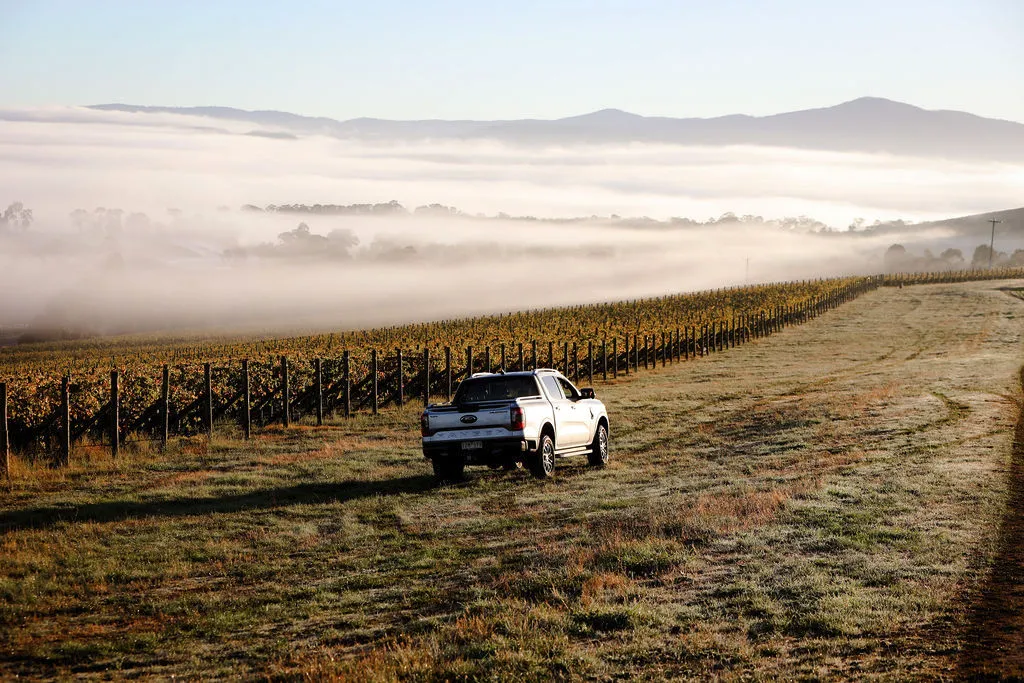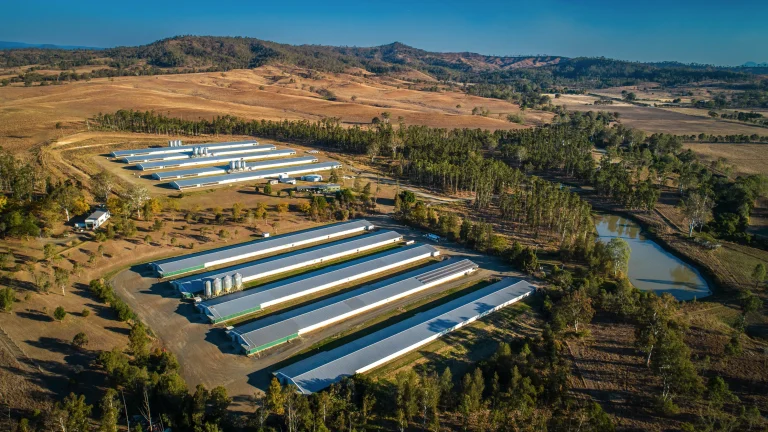Comprehensive Guide to Rural Property Valuation Techniques: Expert Methods
Rural property valuation represents one of the most complex areas within real estate assessment, requiring specialized knowledge of agricultural economics, land productivity, and operational systems that determine property worth. This comprehensive guide to rural property valuation techniques explores the sophisticated methodologies used to assess farmland, livestock operations, and agricultural enterprises across diverse rural landscapes. At Agribusiness Horizons, we employ advanced valuation frameworks that combine traditional appraisal methods with agricultural economics expertise, ensuring accurate assessments that reflect true market values and operational potential. Understanding these valuation techniques becomes essential for property owners, investors, lenders, and advisors involved in rural property transactions.
The rural property sector encompasses diverse asset types from broad-acre cropping land to intensive horticultural operations, each requiring tailored valuation approaches that account for unique production systems, market dynamics, and operational characteristics. Professional valuation expertise ensures stakeholders make informed decisions based on accurate property assessments.
Fundamental Principles of Rural Property Valuation
Rural property valuation operates on established principles that differ significantly from residential or commercial property assessment due to the productive nature of agricultural assets and their dependence on natural resources, climate conditions, and commodity markets. The principle of highest and best use becomes particularly relevant for rural properties where alternative land uses may significantly impact value potential.
Market value determination requires understanding local and regional agricultural markets, commodity price trends, and buyer demographics that influence property demand and pricing levels. Rural properties often demonstrate different liquidity characteristics compared to urban real estate, requiring specialized market knowledge for accurate assessment.
Income-producing capability forms the foundation of most rural property valuations, with land productivity, operational efficiency, and revenue generation potential driving market values. Understanding the relationship between agricultural production and property values requires expertise in farming systems, cost structures, and profitability analysis.
Physical characteristics including soil quality, topography, climate conditions, and water availability significantly influence rural property values through their impact on agricultural productivity and operational suitability. These factors require detailed technical assessment beyond standard property inspection procedures.
Location factors encompass proximity to markets, processing facilities, transport infrastructure, and support services that affect operational efficiency and property desirability. Understanding location premiums and discounts requires knowledge of agricultural supply chains and regional development patterns.
Comparative Market Analysis for Rural Properties
Developing effective comparative market analysis for rural properties requires sophisticated understanding of property characteristics, market conditions, and transaction details that influence pricing levels. This comprehensive guide to rural property valuation techniques emphasizes the importance of selecting truly comparable properties based on location, size, soil quality, infrastructure, and operational capacity.
Market data collection presents unique challenges in rural areas where transaction volumes may be limited and property details often require specialized knowledge to interpret accurately. Professional valuers maintain comprehensive databases of rural property transactions with detailed property characteristics and market conditions.
Adjustment methodologies account for differences between subject properties and comparable sales including size variations, soil quality differences, infrastructure conditions, and timing factors that affect transaction prices. Rural property adjustments often require substantial modifications due to the significant impact of physical characteristics on property values.
Regional market variations significantly influence rural property values, with identical farming operations potentially commanding different prices based on location factors including climate reliability, market access, and regional development trends. Understanding regional premiums and discounts requires extensive local market knowledge.
Market timing considerations become particularly important for rural properties due to commodity price cycles, seasonal factors, and agricultural policy changes that influence buyer sentiment and pricing levels. Accurate valuation requires understanding these cyclical factors and their impact on property values.
Income Capitalization Methods
Income capitalization represents the primary valuation method for productive rural properties, requiring detailed analysis of agricultural income potential, operational costs, and appropriate capitalization rates that reflect market expectations and risk factors. This approach evaluates properties based on their capacity to generate sustainable agricultural income.
Net operating income calculation requires comprehensive understanding of agricultural revenue streams, production costs, and operational expenses that determine property profitability. Revenue analysis encompasses crop yields, livestock production, commodity prices, and government program payments that contribute to property income.
Operating expense analysis covers variable costs including seed, fertilizer, fuel, and labor, plus fixed costs including insurance, rates, and maintenance that affect net income calculations. Understanding agricultural cost structures requires specialized knowledge of farming operations and industry benchmarks.
Capitalization rate determination incorporates market-derived rates that reflect investor expectations for agricultural property returns, risk assessment, and alternative investment opportunities. Rural property capitalization rates typically differ from other property sectors due to unique risk characteristics and market dynamics.
Risk assessment factors include commodity price volatility, weather dependency, regulatory changes, and market access considerations that influence appropriate risk premiums and capitalization rates. Professional valuers understand how these factors affect investor requirements and property pricing.
Discounted Cash Flow Analysis
Sophisticated rural property valuation often employs discounted cash flow analysis that projects future income streams and capital expenditure requirements over extended periods, accounting for agricultural cycles and long-term trends that affect property performance. This methodology suits properties with development potential or significant operational changes.
Cash flow projection requires detailed understanding of agricultural production cycles, seasonal patterns, and long-term commodity trends that influence revenue timing and sustainability. Projections must account for productivity improvements, input cost inflation, and market evolution that affect future performance.
Capital expenditure modeling encompasses infrastructure replacement, technology upgrades, and development investments required to maintain or enhance property productivity. Understanding agricultural infrastructure depreciation and replacement cycles becomes essential for accurate projections.
Terminal value calculation requires assessment of property value at the end of projection periods, considering factors including land appreciation, infrastructure condition, and market conditions that influence residual values. Agricultural properties often demonstrate strong land value appreciation over long periods.
Discount rate determination incorporates risk-free rates, market risk premiums, and property-specific risk factors that reflect investor requirements for rural property investments. These rates typically differ from other property sectors due to agricultural market characteristics.
Replacement Cost Approach
The replacement cost method evaluates rural properties by estimating current reproduction costs for all improvements while accounting for depreciation, obsolescence, and functional adequacy relative to modern agricultural standards. This approach proves particularly valuable for specialized agricultural facilities and unique properties.
Land value assessment forms the foundation of replacement cost analysis, requiring detailed understanding of agricultural land markets and the factors that influence raw land prices in specific regions and soil types. Land values often represent substantial portions of total rural property values.
Improvement cost estimation encompasses all agricultural infrastructure including buildings, fencing, water systems, and specialized facilities required for property operations. Current construction costs must reflect modern building standards and agricultural efficiency requirements.
Depreciation analysis evaluates physical deterioration, functional obsolescence, and economic obsolescence that reduce improvement values below replacement cost levels. Agricultural improvements often demonstrate different depreciation patterns compared to other property types due to operational requirements and maintenance practices.
Functional adequacy assessment determines whether existing improvements meet current agricultural standards and operational requirements. Older agricultural facilities may require significant upgrades to achieve modern efficiency standards and regulatory compliance.
Soil Quality and Land Classification Assessment
| Soil Classification | Productivity Rating | Valuation Impact | Assessment Methods |
|---|---|---|---|
| Prime Agricultural Land | Excellent productivity, minimal limitations | Premium valuations, highest demand | Detailed soil mapping, yield analysis |
| Good Agricultural Land | High productivity, minor limitations | Strong valuations, good demand | Soil testing, drainage assessment |
| Moderate Agricultural Land | Adequate productivity, some limitations | Standard valuations, variable demand | Slope analysis, soil depth evaluation |
| Marginal Agricultural Land | Limited productivity, significant constraints | Discounted valuations, specialized uses | Comprehensive limitation assessment |
Soil quality assessment represents a critical component of rural property valuation, requiring technical expertise to evaluate productive capacity, operational limitations, and long-term sustainability factors that significantly influence property values and agricultural potential.
Agribusiness Horizons’ Advanced Valuation Methodology
At Agribusiness Horizons, our comprehensive guide to rural property valuation techniques incorporates sophisticated analytical frameworks that combine traditional valuation methods with agricultural economics expertise and market intelligence capabilities. We understand that rural properties represent complex agricultural enterprises requiring detailed analysis of production systems, market conditions, and operational characteristics.
Our valuation methodology integrates multiple approaches including comparative market analysis, income capitalization, and replacement cost methods that provide comprehensive value assessments suitable for various purposes including transactions, financing, and strategic planning. We maintain extensive databases of rural property transactions and agricultural performance benchmarks that inform accurate valuations.
Our technical expertise encompasses agricultural production systems, infrastructure assessment, and operational analysis that enables thorough evaluation of property productivity, infrastructure condition, and operational efficiency. We coordinate with agricultural specialists, soil scientists, and technical consultants to provide comprehensive property assessments.
Our market intelligence services provide clients with current agricultural trends, commodity projections, and regulatory developments that affect rural property values and investment attractiveness. We analyze market fundamentals and future outlook considerations that influence long-term value projections and investment decision-making.
Technology Integration in Modern Valuation
Contemporary rural property valuation increasingly incorporates advanced technologies that enhance assessment accuracy while providing detailed insights into property characteristics and productive potential. Geographic Information Systems enable sophisticated analysis of soil types, topographic features, and climatic conditions that influence agricultural productivity and property values.
Satellite imagery and remote sensing technologies provide detailed information about cropping patterns, pasture conditions, and infrastructure development that supports comprehensive property assessment. These technologies enable analysis of large rural properties efficiently while identifying features that may not be apparent through traditional inspection methods.
Precision agriculture data including yield mapping, soil testing results, and variable rate application records provide valuable insights into property productivity and management effectiveness that influence valuation assessments. Properties with comprehensive data records often command premium values due to demonstrated performance and optimization potential.
Drone technology enables detailed infrastructure inspection and property mapping that enhances assessment accuracy while reducing inspection time and costs. Aerial photography and mapping provide comprehensive property documentation that supports detailed valuation analysis.
Digital modeling platforms integrate multiple data sources including soil maps, climate data, and market information to provide sophisticated property analysis and valuation support. These platforms enhance valuation accuracy while providing clients with comprehensive property insights.
Specialized Rural Property Categories
Different rural property types require specialized valuation approaches that account for unique operational characteristics, market dynamics, and value drivers. Intensive horticultural properties require detailed assessment of planting density, variety selection, infrastructure sophistication, and market positioning that differ significantly from broad-acre farming operations.
Livestock properties encompass grazing land assessment, carrying capacity analysis, water resource evaluation, and livestock handling infrastructure that determine operational efficiency and property values. Understanding livestock markets and production systems becomes essential for accurate valuation.
Mixed farming operations require comprehensive analysis of diversified income streams, operational synergies, and infrastructure utilization that create complex valuation challenges. These properties often demonstrate enhanced stability through diversification but require detailed understanding of multiple agricultural enterprises.
Specialty crop operations including viticulture, tree crops, and intensive horticulture require specialized knowledge of establishment costs, production cycles, and market positioning that influence long-term value sustainability and investment attractiveness.
Irrigation properties require detailed assessment of water rights, infrastructure capacity, and operational efficiency that significantly influence property values and agricultural potential. Water security analysis becomes critical for properties dependent on irrigation systems.
Market Timing and Valuation Accuracy
Strategic timing significantly influences rural property valuations through its impact on market conditions, commodity prices, and buyer sentiment that affect transaction levels and pricing patterns. Understanding agricultural cycles and seasonal factors helps optimize valuation timing and improve assessment accuracy.
Commodity price cycles create substantial variation in agricultural profitability and corresponding property values, requiring understanding of market fundamentals and price trend analysis. Professional valuers monitor commodity markets and incorporate price expectations into valuation assessments.
Capital market conditions including interest rates, lending availability, and investment sentiment affect buyer demand and financing capacity that influence rural property values. Favorable financing conditions typically enhance property values through improved buyer capacity and reduced investment costs.
Government policy developments including agricultural support programs, environmental regulations, and taxation changes affect operational costs and revenue potential that influence property valuations and investment attractiveness.
Weather conditions and seasonal factors affect both property accessibility for inspection and market activity levels that influence valuation timing and transaction patterns. Understanding these factors helps optimize valuation scheduling and market analysis.
Risk Assessment and Valuation Adjustments
Comprehensive risk assessment forms an essential component of rural property valuation, covering production risks, market risks, regulatory risks, and environmental risks that could affect property values and investment returns. Climate risk assessment evaluates long-term weather patterns, drought frequency, and extreme weather exposure that affect agricultural sustainability.
Production risks include pest and disease exposure, input cost volatility, and yield variability that affect income stability and property attractiveness. Understanding these risks helps determine appropriate risk premiums and value adjustments for different property types and locations.
Market risks encompass commodity price volatility, demand fluctuations, and competitive pressures that influence revenue projections and property values. Professional valuers incorporate market risk analysis into valuation models and adjustment calculations.
Regulatory risks include compliance costs, environmental restrictions, and policy changes that could impact operational costs or property use options. Properties with superior compliance records and regulatory certainty typically command premium valuations due to reduced regulatory risk exposure.
Financial risks cover debt capacity, cash flow variability, and capital expenditure requirements that affect investment attractiveness and financing availability. Understanding financial risk factors helps assess appropriate valuation adjustments and investment structuring considerations.
Quality Assurance and Professional Standards
Professional rural property valuation requires adherence to established quality assurance standards and industry best practices that ensure accuracy, reliability, and defensibility of valuation assessments. Professional valuation standards mandate specific procedures, documentation requirements, and ethical obligations that maintain industry credibility.
Peer review processes and professional development requirements ensure valuers maintain current knowledge of market conditions, valuation methodologies, and industry developments that affect assessment accuracy. Continuing education requirements keep professionals updated on evolving standards and techniques.
Documentation standards require comprehensive reporting that supports valuation conclusions with detailed analysis, market evidence, and technical assessments that enable review and verification by third parties. Professional reports must meet legal and regulatory requirements for various purposes.
Quality control procedures including internal review processes, data verification, and methodology consistency ensure valuation accuracy and reliability across different properties and market conditions. These procedures maintain professional standards while reducing assessment errors.
Professional liability considerations require adequate insurance coverage and risk management procedures that protect both valuers and clients from potential errors or omissions that could affect financial outcomes or legal obligations.
Conclusion and Professional Valuation Strategy
This comprehensive guide to rural property valuation techniques demonstrates the sophisticated expertise required for accurate assessment of agricultural properties across diverse rural landscapes and operational systems. The complexity of rural properties demands specialized knowledge of agricultural economics, production systems, and market dynamics that influence property values and investment potential.
Consider these strategic questions when engaging rural property valuation services: How do current agricultural market conditions and commodity price trends affect realistic value expectations for your property type and location? What specialized expertise and methodological approaches are most appropriate for your specific property characteristics and valuation purpose? How can comprehensive valuation analysis support your strategic planning and investment decision-making processes?
The rural property market continues evolving through technological advancement, sustainability requirements, and changing agricultural practices that create both opportunities and challenges for property valuation. Working with experienced rural property specialists ensures accurate valuations that reflect current market conditions and future industry trends.
Contact Agribusiness Horizons today to discuss your rural property valuation requirements. Our comprehensive approach to agricultural property assessment, market analysis, and valuation methodology ensures accurate property valuations that support informed decision-making for transactions, financing, strategic planning, and investment purposes.



